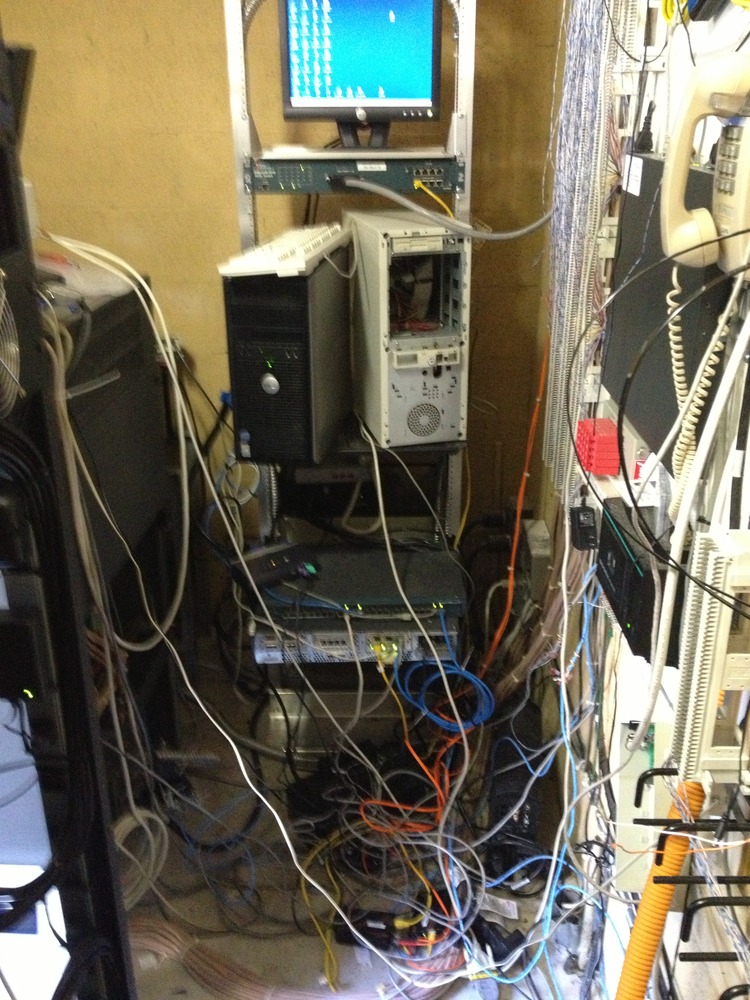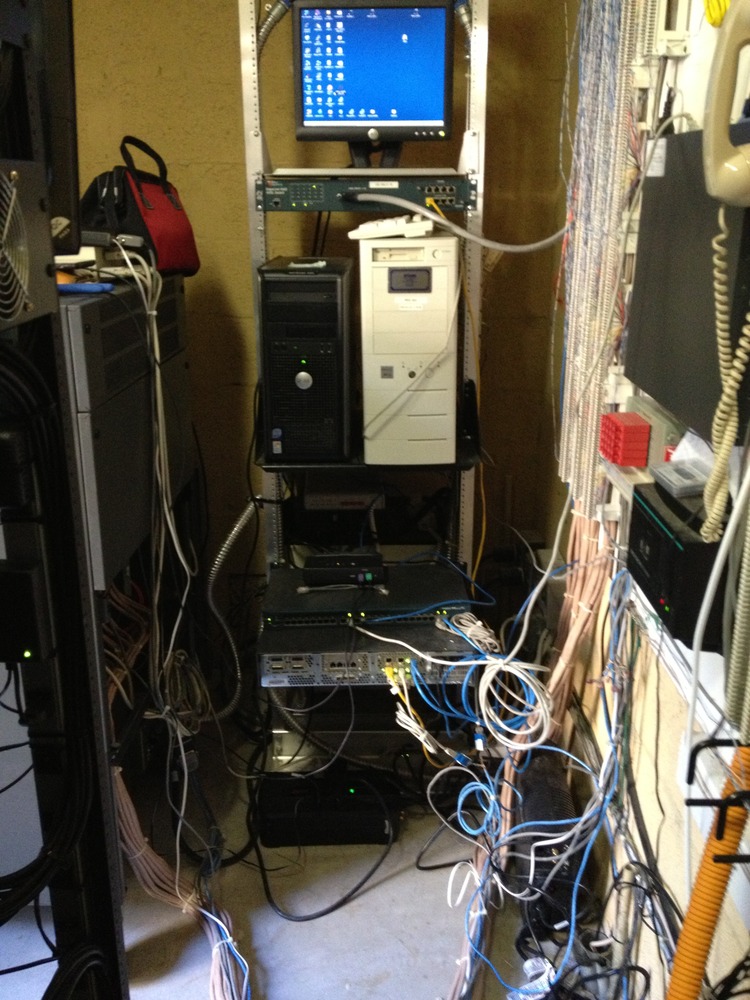Does your computer area look like this? Or worse?

Don’t worry. It’s quite normal to have a horrendous mass of electrical spaghetti surrounding your equipment. However, it’s not a good idea. Those wires and cables get tangled, and when you need to move something, you’ll inevitably end up pulling something out or disconnecting a vital component. At home, those trailing leads are a magnet for cats, dogs and toddlers alike, and in the office, they’re a potential safety hazard and insurance liability. We always recommend keeping cables neatly tucked away and labeled.
Cable ties
The quickest and easiest way to make a difference is by using cable ties to keep everything together, keep long cables neatly coiled, and stop it from spreading out too much. You can use plastic cable ties, available from any hardware store, or you can improvise with those twist ties that come with pretty much any electrical item. For added safety, you can keep cables out of the way with duct tape – attaching them firmly to the rear of your desk can prevent them being accidentally snagged and pulled out.
Cable sleeves & tracks
When you have a lot of cables, it may be best to use a cable sleeve to keep them all together. They’re less tempting for pets and kids, and they won’t attract dust bunnies. Attaching cable trunking to the wall keeps it out of the way and safe.
If you’re running cables across the floor, then we very strongly suggest using cable tracks to reduce the risks of tripping or of your cables being damaged by chairs, vacuuming or feet.
Labels
Look behind your TV or computer. Can you tell which cable goes to the printer or PlayStation? Can you tell which power cord disconnects the monitor and which one goes to the speakers? Attach a label to both ends of every connector and power cable saying what they’re for. Then, if you ever have to move or disconnect a component, or if something accidentally gets pulled out, you’ll know exactly what goes where.
It’s particularly useful if you’re dealing with long cables in trunking – no more trial and error as you try disconnecting different leads to see what they all do. It’s a little bit more work when you’re putting things together, but you’ll be glad you did.






